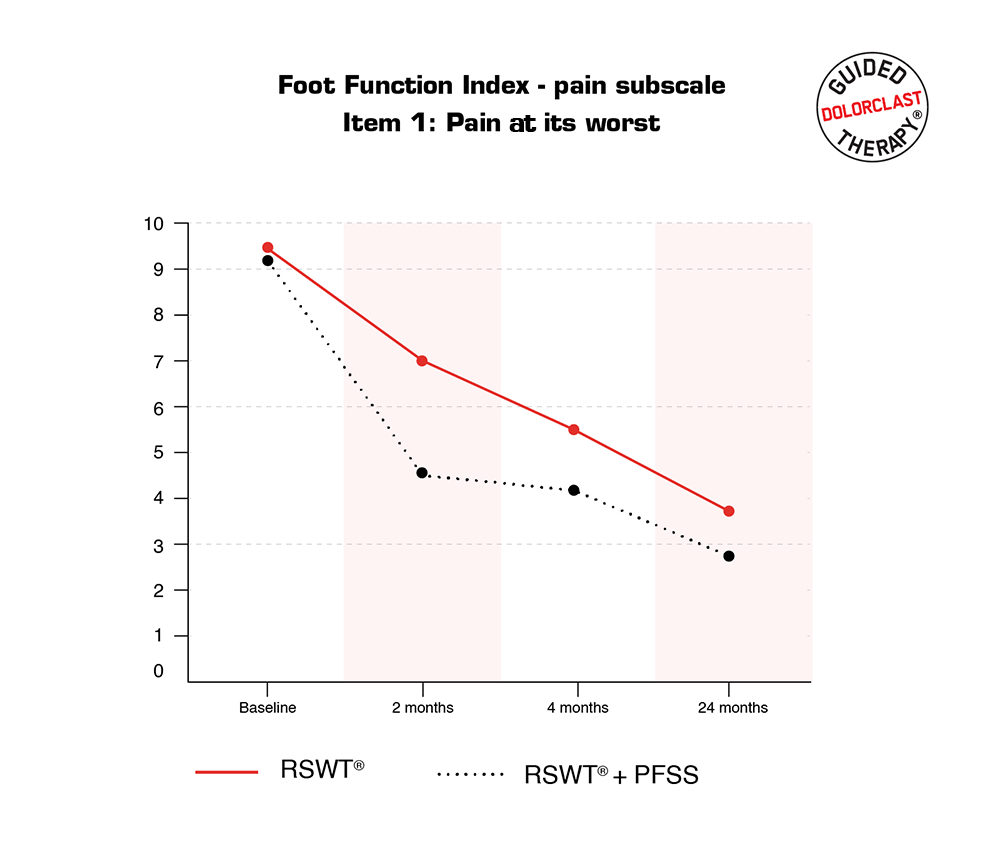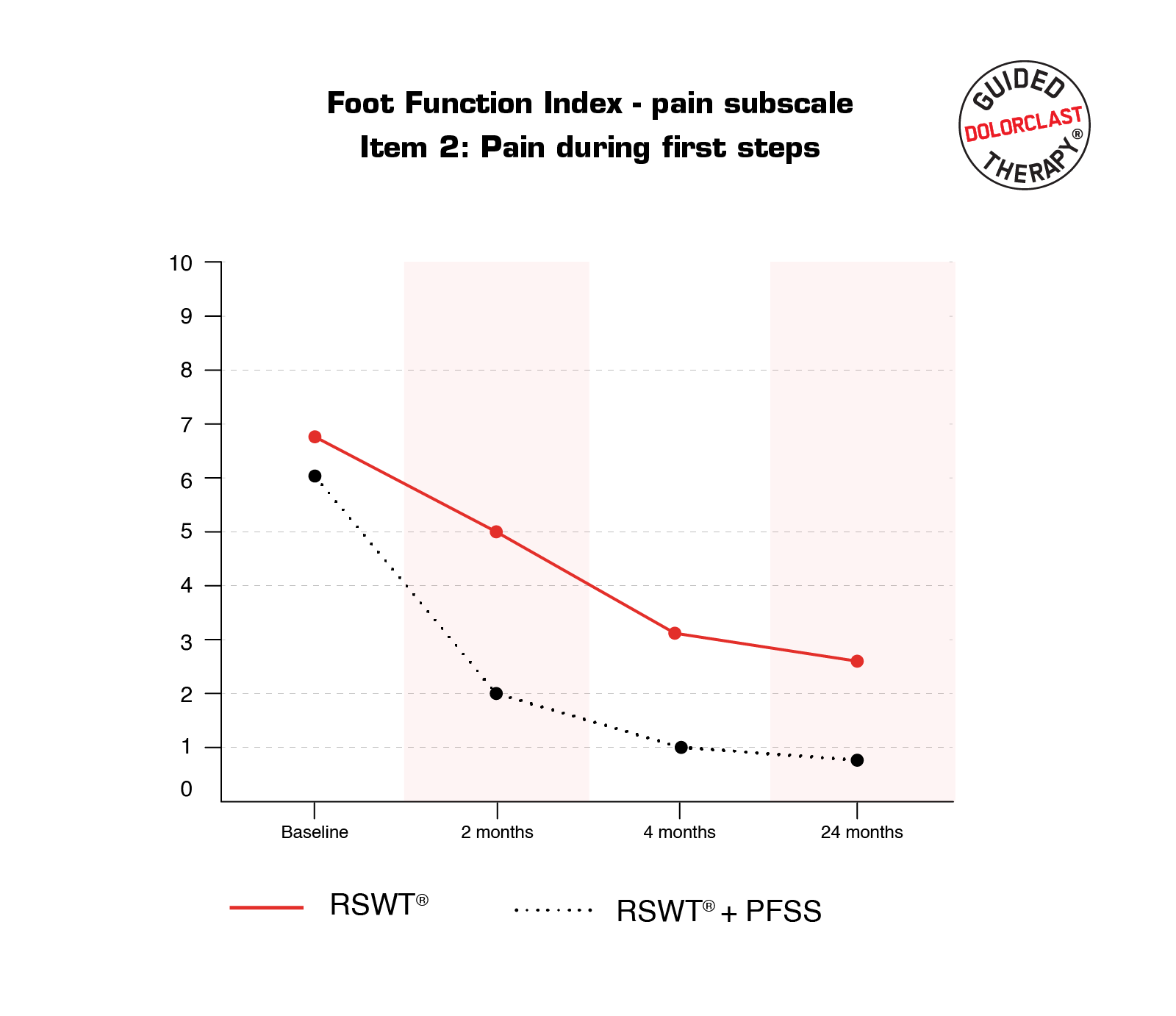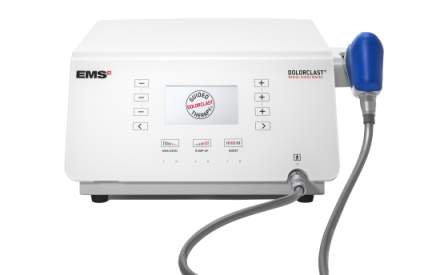Radial shock wave treatment alone is less efficient than radial shock wave treatment combined with tissue-specific plantar fascia stretching in patients with chronic plantar heel pain
Rompe, Jan D. et al. “Radial shock wave treatment alone is less efficient than radial shock wave treatment combined with tissue-specific plantar fascia-stretching in patients with chronic plantar heel pain.” International Journal of Surgery vol. 24,Pt B (2015): 135-42.
Background
Choosing the right treatment strategy for plantar fasciopathy might be very challenging. To date, recommended treatment regimens consist of rest, shoe wear modification (including inserts), NSAIDs, stretching exercises, physical therapy, corticoid injections, and custom orthoses. However, there is a fundamental problem in all of these solutions, namely the obligation to be highly compliant with the recommendations.
Methods
The study cohort consisted of two randomized groups evaluated by the blinded observer. Each enrolled patient has previously undergone at least three non-operative treatment methods. Adult patients with unilateral plantar fasciopathy, with at least 12 months of symptomatic period (indicating chronic condition), were included in the study. All patients were diagnosed at baseline by an experienced orthopedist.
A total of 152 individuals met the inclusion criteria and signed informed consent. Patients were assigned to the following treatment groups:
- repetitive low-energy RSWT® administered once a week for 3 weeks, (N = 73);
- the same RSWT® protocol coupled with an 8-week plantar fascia-specific stretching program performed three times daily, (N = 79).
During each session, 2000 pulses were applied with an air pressure of 4 bar. The total amount of positive energy-flux density per treatment was 320 mJ/mm2. RSWT® did not require using local anesthesia.
Radial extracorporeal shock waves were administered using the DolorClast® Radial Shock Waves device (Electro Medical Systems, Nyon, Switzerland).
Outcomes
All participants received detailed baseline evaluation and were asked to participate in a follow-up examination (2, 4, and 24 months after treatment), which included:
- pain subscale of the validated Foot Function Index (PS-FFI),
- patient-relevant outcome measures (SROM) questionnaire.
Results
Significant pain reduction was o bserved in both study groups. Treatment effectiveness was expressed as differences between mean PS-FFI scores from baseline to the 2-, 4-, and 24-month follow-up evaluations.


Two months after baseline, the analysis demonstrated a statistically significant effect of treatment (P<0.01) as well as a treatment-time interaction (P<0.01) in favor of RSWT® combined with plantar fascia-specific stretching. Statistically significant, however not clinically important, differences persisted at 4 and 24 months of follow-up.
6th question from the SROM questionnaire addressed patients satisfaction and showed considerable differences:
- 2 months after baseline, 32% of patients receiving RSWT® vs. 59% of patients on combined therapy were totally satisfied or satisfied with minor reservations with the treatment (P<0.001),
- 4 months after baseline, 49% of patients receiving RSWT® vs. 71% of patients on combined therapy were totally satisfied or satisfied with minor reservations with the treatment (P=0.01).
A remarkably lower rate of positive responses regarding SROM questions from 1 to 5 (pain, activity limitations) was registered in the RSWT® monotherapy group 2 and 4 months after starting therapy.
There were no clinically relevant side effects or device-related complications registered.
Conclusions
This randomized controlled study has shown that stretching exercises coupled with RSWT® enhanced recovery of plantar fasciopathy. A program of manual stretching in combination with repetitive low-energy RSWT® was found to be superior to RSWT® alone in the management of chronically presenting plantar fasciopathy.

